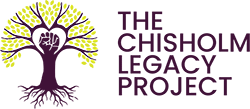Mapping Urban Risk: Flood Hazards, Race, and Environmental Justice in New York
This paper applies a more nuanced method for mapping population data to estimate the number of people potentially impacted by flood hazards in New York City. The authors find that the number of people living in the floodplain in New York City is undercounted by traditional mapping methods by 37-72% compared to their method, and that this undercounting was not evenly spread across racial and ethnic groups. The paper also provides a literature review that outlines: why and how various groups of people may be impacted differently by the same disaster event, a review of environmental justice more broadly, and an overview of flood hazards in the U.S.
Resource Details
Related resources (by topic)
Ujimaa Medics
UMedics is a Black health collective. We spread emergency first response, community care, and survival skills to access health justice and long-term wellness for all Black lives.
WHO’S IN DANGER? Race, Poverty, and Chemical Disasters
This report is the first public accounting of the demographic characteristics of populations within the “vulnerability zones” of entire industry sectors that manufacture chemicals, treat water or wastewater, produce bleach, generate electric power, refine petroleum, produce pulp and paper, or…
Whole Community Disaster Planning: Inclusive Approaches to Recovery and Preparedness
Host: U.S. Environmental Protection Agency Summary: This webinar highlights efforts that support and strengthen community leaders, networks, and assets that can be leveraged to improve resiliency, public health, and community access to information and resources.
Help us expand the Resource Hub
Share resources that you think would be a good addition to this tool and our team will review them for inclusion in future updates.
